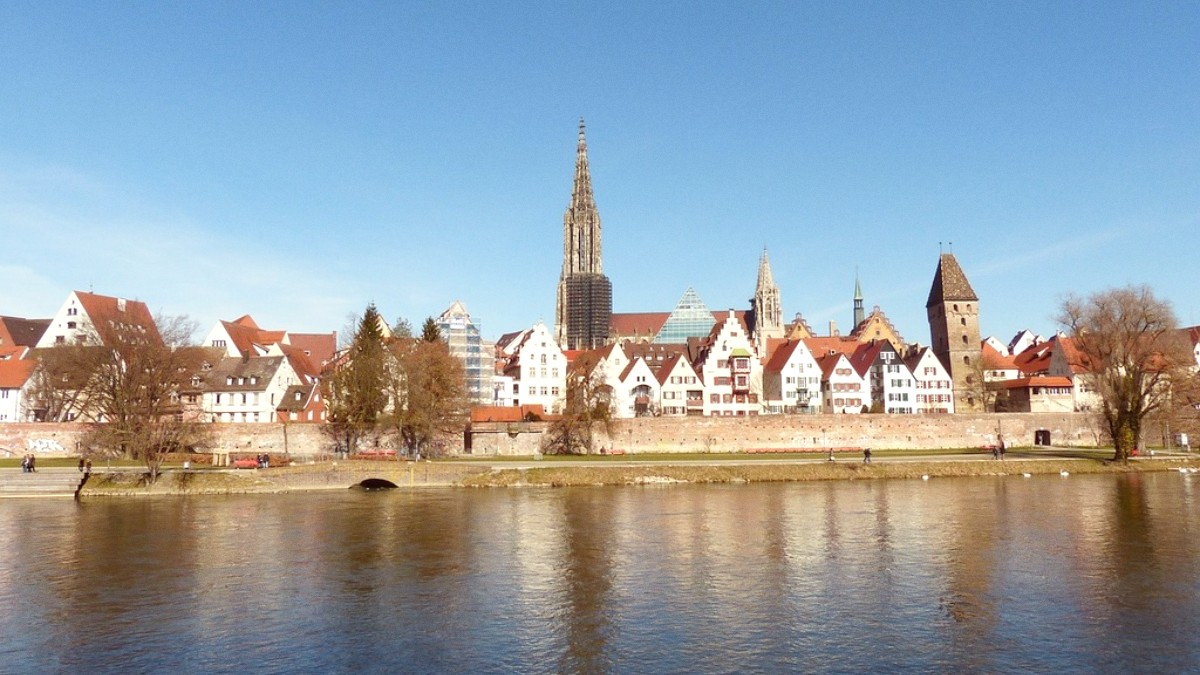
Baden Wurttemberg, Germany
The city's atmosphere blends relaxed Swabian hospitality with the energetic pulse of an university town. You find locals enjoying coffee in historic squares, students biking along river paths, and visitors gazing up at the Minster's immense height. Ulm welcomes you to become part of its daily rhythm, to stroll through its quarters, and to uncover the many layers of its personality. This guide prepares for an adventure that moves from iconic landmarks to hidden corners, making certain your visit is complete and rewarding.
Ulm is a testament to resilience, having rebuilt itself while carefully preserving its historic heart. This balance creates an inviting environment where old-world charm comfortably coexists with contemporary life.
Every street, every building, and every view tells a part of Ulm's story.
Ulm is a city positioned in the state of Baden-Württemberg, Germany, right on the River Danube. This strategic location places it at the southeastern edge of the Swabian Jura, a low mountain range presenting scenic landscapes. The city lies approximately 90 kilometers (56 miles) southeast of Stuttgart and 120 kilometers (75 miles) northwest of Munich. This positioning makes Ulm a base for exploring southern Germany.
The city itself is split by the river. The main urban area, including the historic center and the iconic Ulm Minster, sits on the left (northwest) bank, firmly within Baden-Württemberg. Directly across the river, on the right (southeast) bank, lies the suburb of Neu-Ulm. This twin city, Neu-Ulm, belongs to the neighboring state of Bavaria. This unique geographical division means you can step from one German state to another just by crossing a bridge over the Danube.
Approximately 48.40° N latitude and 9.99° E longitude.
Temperate climate with distinct four seasons.
Proximity to the Swabian Jura offers picturesque natural surroundings.
The Danube River shaped Ulm's trade, defense, and recreation for centuries.
A stopping point for many European river cruises.
This geographical feature influences local culture, administration, and even the distinctions of local dialect. The proximity to the Swabian Jura means the city gains from picturesque natural surroundings, presenting opportunities for hiking, cycling, and exploring charming villages just a short distance from the urban core.
Promenade paths line the Danube's banks, presenting pleasant strolls and views, while boat trips give a different perspective of the cityscape.
The presence of the Danube means the city is a stopping point for many European river cruises, connecting it to a wider network of travel and tourism.
Ulm's location makes it a versatile destination, blending urban exploration with natural escapes.
Ulm's history is long and rich, tracing its origins back to the early Middle Ages. The city's first recorded mention dates to 854 AD, indicating its establishment as a prominent settlement over a millennium ago. Its path took a significant turn in 1181 when it received the status of a Free Imperial City by Frederick I Barbarossa.
This designation gave Ulm considerable autonomy within the Holy Roman Empire, allowing it to govern itself and prosper largely independent of direct ducal or princely rule. This freedom fostered a spirit of civic pride and self-determination that still marks the city today.
The strategic location on the Danube was a major factor in Ulm's rise. The river served as a waterway for trade, connecting Ulm to eastern and western Europe. Ulm became a prominent trading center, notably known for its production and trade of high-quality textiles, especially linen.
A testament to prosperity and civic pride is the Ulm Minster. Its construction began in 1377, a massive undertaking that stretched over centuries. The Minster was built by the citizens of Ulm, demonstrating their collective wealth, skill, and deep faith.
Ulm is a special place in the history of science. It is the birthplace of Albert Einstein, one of the most influential physicists of all time, born here in 1879.
The city faced hardship during World War II, suffering extensive damage from Allied bombing raids. A significant portion of the city, including much of the historic center, was destroyed. However, the Ulm Minster, remarkably, withstood the attacks.
Ulm sits within Baden-Württemberg, Germany, right on the River Danube. Its dual identity, with Neu-Ulm across the river in Bavaria, provides an interesting geographical quirk.
The city has a population of approximately 129,000 residents within its city limits, as of 2023.
The Ulm Minster (Ulmer Münster) is the city's undisputed icon. It features the world's tallest church spire, reaching an impressive 161.5 meters (530 feet) into the sky.
Ulm presents a picture of balance: between old and new, tradition and progress, nature and urbanity. It welcomes exploration and a rich, layered experience for every visitor.
The Minster is not merely a historical building; it is an active place of worship and a symbol of civic pride. Its sheer scale and architectural details draw visitors from around the globe.
The city's past as a center of trade and self-governance provides a fascinating backdrop for contemporary exploration, visible in its well-preserved medieval quarter.